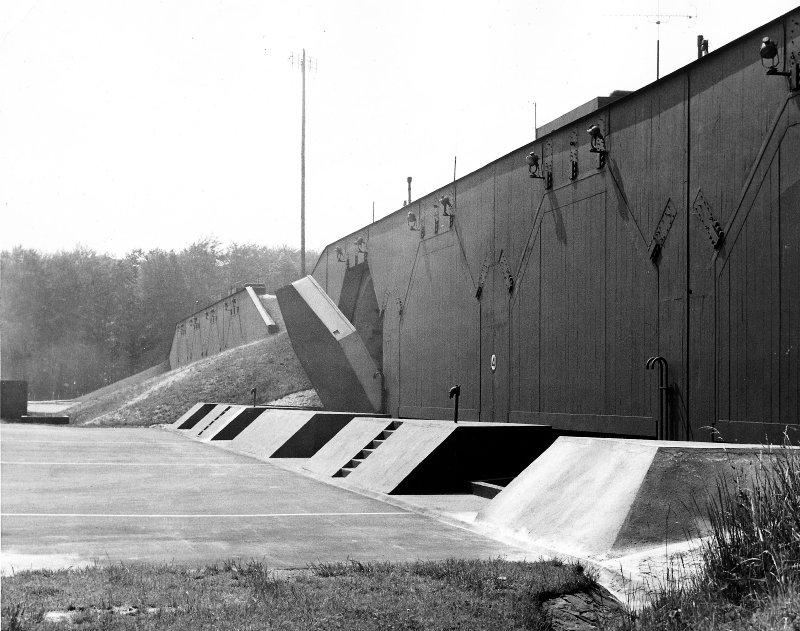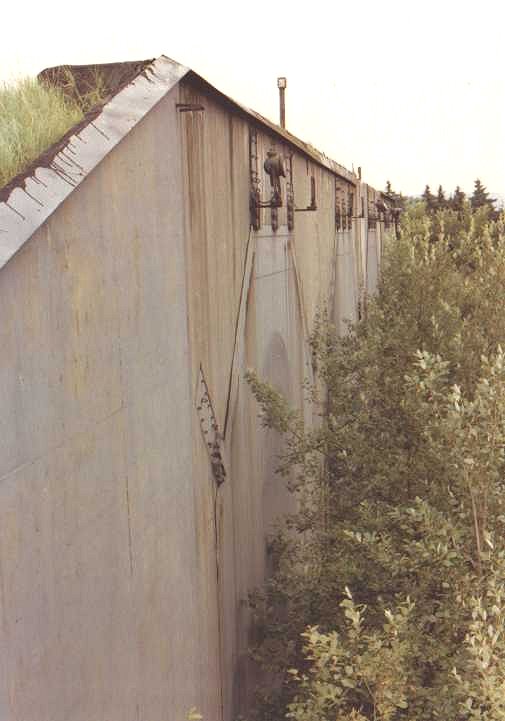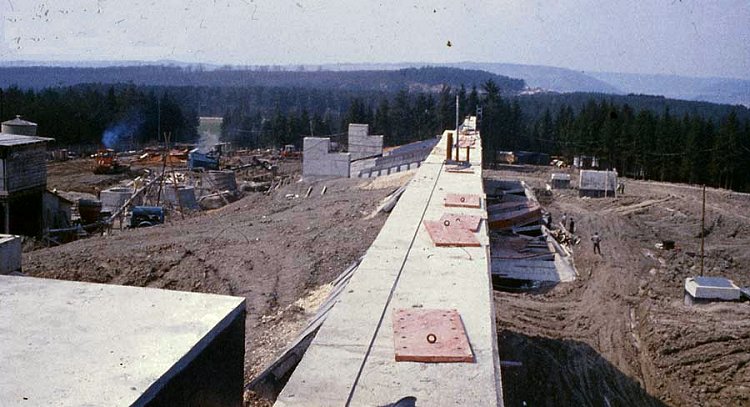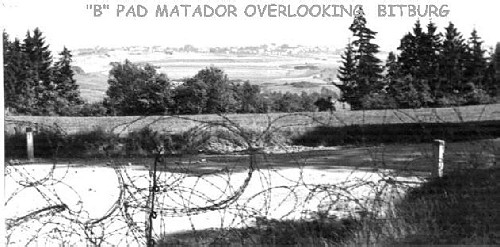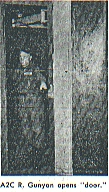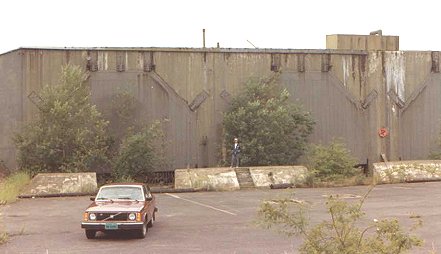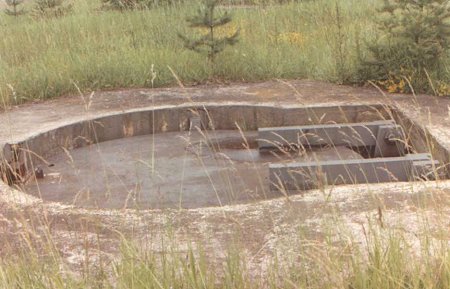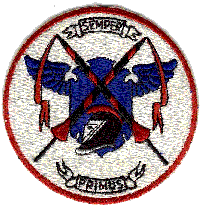
|
U.S. Air Force Tactical MissilesNow Available On Line at
|
|
Beyond the Web Page... The only book devoted exclusively to the Matador and Mace Tactical Missiles. The book reveals the story from the initial idea that became the first U.S. pilotless bomber, through the politically troubled development of the ever evolving deployment methods of the Matador and Mace Tactical Missiles. It covers the Units, Groups, Squadrons and Wing that fielded the missiles. From the United States test sites, Europe, Asia and North Africa nothing is omitted. All phases of the application of these two missiles by the U.S. Air Force (and West German Luftwaffe) are included, from the first tentative launches of the XSSM-A-1 Matador in January 1949, to the tense alert duty of the Cuban Missile Crisis, and the final launch of a MQM13A in May of 1977. The maintenance, logistics and launch, the men, equipment and tactics are all there. |

|
US Air Force Tactical Missiles © 2008 - George Mindling and Robert Bolton | ||||||||||||||||||||||||||
|
Inspired by the 38th TMW Website, George Mindling and Robert Bolton co-authored US Air Force Tactical Missiles 1949 - 1969: The Pioneers © 2008, the story of America's first operational missiles, from the Matador to the Mace, from Taiwan, Korea, and Okinawa to Germany, including Lowry, Orlando, Holloman, Santa Rosa Island at Eglin, and even Camp Happiness! | ||||||||||||||||||||||||||
|
Dieses Buch ist ein Muss für alle, die im Rahmen ihres Dienstes bei der U.S. Air Force mit den frühen Marschflugkörpern zu tun hatten, aber auch für deutsche Militärarchäologen, die in der Eifel, im Hunsrück oder im Pfälzer Wald schon über rätselhafte Hinterlassenschaften gestolpert sind. Nach mehr als 40 Jahren wird endlich eine Fälle von Fakten, Informationen und Geschichten zu den zwischen 1954 und 1969 in Deutschland stationierten, mit Automwaffen ausgerüsteten amerikanischen Matador und Mace auf den Tisch gelegt. Ausfährlich und lebendig erzählen George Mindling und Bob Bolton von den jungen Missilemen, die im März 1954 erstmals in Bitburg ankamen - noch ganz grün im Gesicht, weil auf dem Atlantik schwerer Sturm geherrscht hatte. Von den T-33-Flugzeugen, die aus übungsgründen so taten, als wären sie Matador-Flugkörper, äber die Startstellungen hinweg in Richtung deutsch-deutsche Grenze donnerten und sich von der Gegenseite nur nicht erwischen lassen durften. Oder von der Kuba-Krise, als die US Air Force Europe auf DEFCON 3 ging und an die Mechaniker in Bitburg Munition für ihre Karabiner ausgegeben wurde. Augenzeugen sagen dazu: "Wir hätten die Vögel auf jeden Fall innerhalb von 15 Minuten in der Luft haben müssen!" Es ist lebendige Militärgeschichte, die nun nicht der Vergessenheit anheimfällt, sondern jedermann zugänglich wird - auch für die ortsansässige Bevökerung, die heute endlich erführt, was sich damals in ihrer Nachbarschaft zugetragen hat. Den beiden Autoren gebührt der Dank. Klaus Stark (klaus_stark@t-online.de)
This book is not only a must for all those who served in the U.S. Air Force with the early cruise missiles, but also for German military archeologists who have been puzzling over relics stumbled across in the Eifel, the Hunsrück and the Palatinate Forests. After more than 40 years, we finally have a wealth of facts, information and stories, from 1954 to 1969, of the nuclear equipped American Matador and Mace missiles stationed in Germany placed on the table. With detailed and vivid descriptions, George Mindling and Bob Bolton talk about the young Missilemen who arrived for the first time in March, 1954, in Bitburg - still green in the face, having prevailed the Atlantic crossing in major storm. Of the T-33 aircraft which practiced as if they Matador missiles launched in the direction of German-German border, or from the Cuban missile crisis, when the U.S. Air Force Europe went on DEFCON 3 and was issued ammunition to the mechanics in Bitburg for their rifles. Eyewitnesses say: "We would have to have the birds in the air in any event within 15 minutes!" It is vital military history that is prey to oblivion, but is now accessible to everyone - even for the local population, which today finally learns what happened at that time in their neighborhood. The two authors deserve thanks for saving the history.
Klaus Stark, |
Rittersdorf Site VII, October 1961 Photo Courtesy of Garld and Janice Edwards (geje@comcast.net)
|
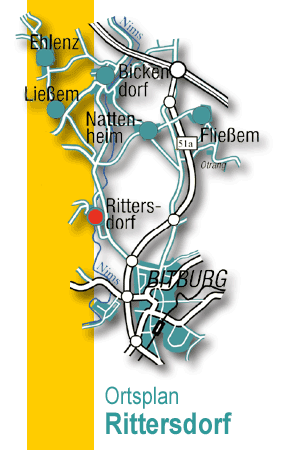 |
The original Matador B Pad (below) at Rittersdorf. The road today is a paved major road, (L-9) en route to the golf course near the Sport Hotel. There are no remnants of the original Matador pads. The Mace hard sites are several hundred yards to the left of the photo, on the other side of the road. The forest chapel, right of center, remains today.
|
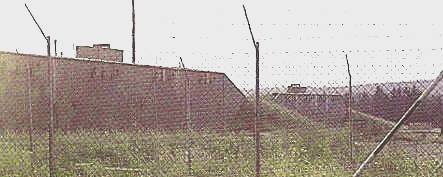
The Rittersdorf launch complex, photo taken during summer, 1993. The complex was built only several hundred yards from the old "soft" Matador "B" pads. Photo courtesy of George Mindling (myakka@embarqmail.com) |

|
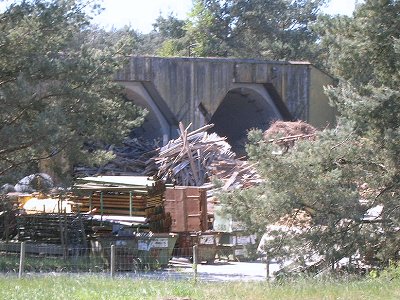
Rittersdorf Site VII - May 2007
|
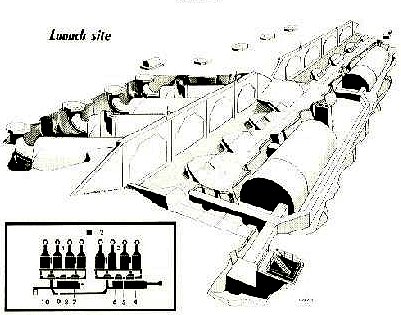
The planned layout for a hardened Mace B site.
Each of the two Launch Command Centers, buried 60 feet under the paved
loading and transport ramp, controls four launch bays.
The Mace site was called a "semi-hardened" launch site, even though the facility
was designed to withstand a nuclear attack. The Main Personnel Access Stairwell is
actually centered in the middle of each complex.
Photo courtesy of George F. Kovach (GFKGDK@aol.com) |
Bernhard Gross's Illustration of a typical Site Layout |
Rittersdorf, Site VII, 1962
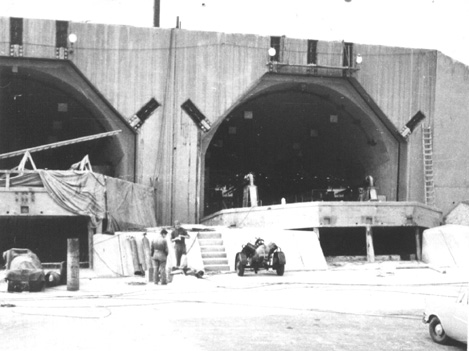
Photo courtesy of Glen Curl (gcurl@bv.net)
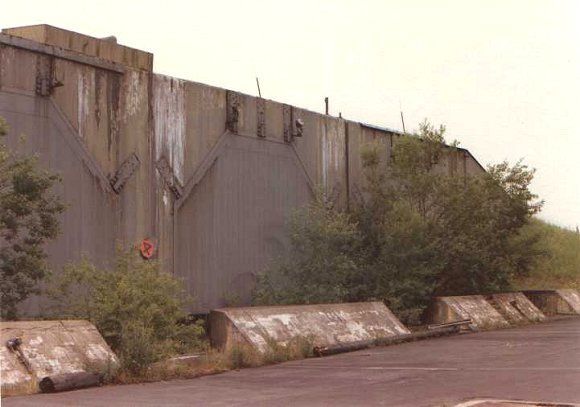
Photo courtesy of Scott Murdock
(scott123murdock@yahoo.com)
|
|
The European Stars and Stripes Article, August 24, 1964
|
|
The main launch doors were originally designed to be filled
with water, however, leaks and swelling when frozen led to the doors being
filled with concrete instead. Raising the doors was a time consuming process.
|
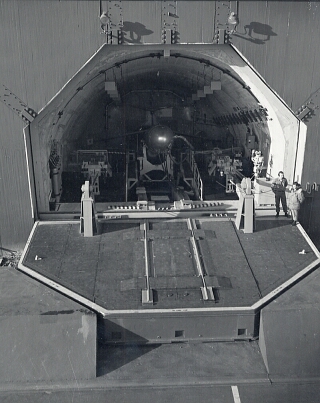 |
|
The gaps in the
concrete allowed the flat bed trailers to
back up exactly against the lowered door, aligning the tracks built into the door
with the tracks on the trailer. The missile/launcher assembly was then winched down the incline into the launch bay by cable. The winch unit was part of the trailer unit. Once the missile, with the RATO bottle attached, had been lowered into place, the
next trailer arrived to load the warhead section.
Once the warhead section was attached, the third and final trailer brought and downloaded the nose section, which contained the Guidance and Flight Controls Systems. The warhead and nose sections were mounted on 4000A trailers that straddled the built in rails. |
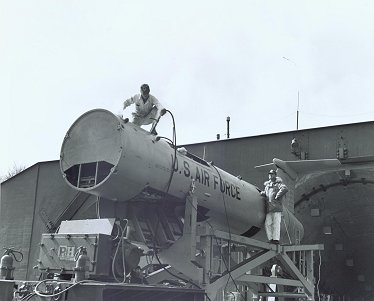
S/Sgt Mann and S/Sgt Chapman purge a fuel cell on a Photo courtesy of Kathy Geary (k.geary@worldnet.att.net) |
|
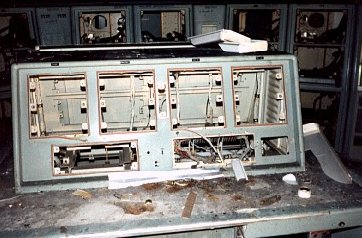
The LCSC, in the Launch Control Center, 60 feet underground,
Photo courtesy of George F. Kovach (GFKGDK@aol.com) |
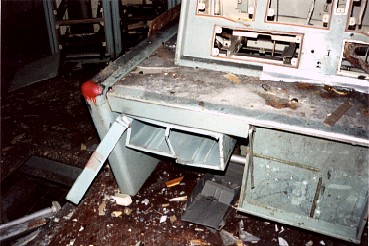 Many tense hours were spent here by alert crews of the
71st Tactical Missile Squadron. The condition of the LCSC in 1995 belies
the emotion, boredom and often "extreme concern" crews experienced 60 feet underground,
Photo courtesy of George F. Kovach (GFKGDK@aol.com) |
The abandoned Rittersdorf launch site, August, 1995, The site will soon be completely overgrown. |
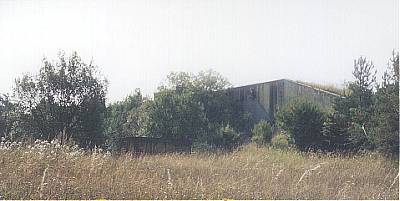
Photo courtesy of George Mindling (myakka@embarqmail.com) |
Rittersdorf, Kreis Bitburg, Germany - "B" Pad - Site VII - 2005
|
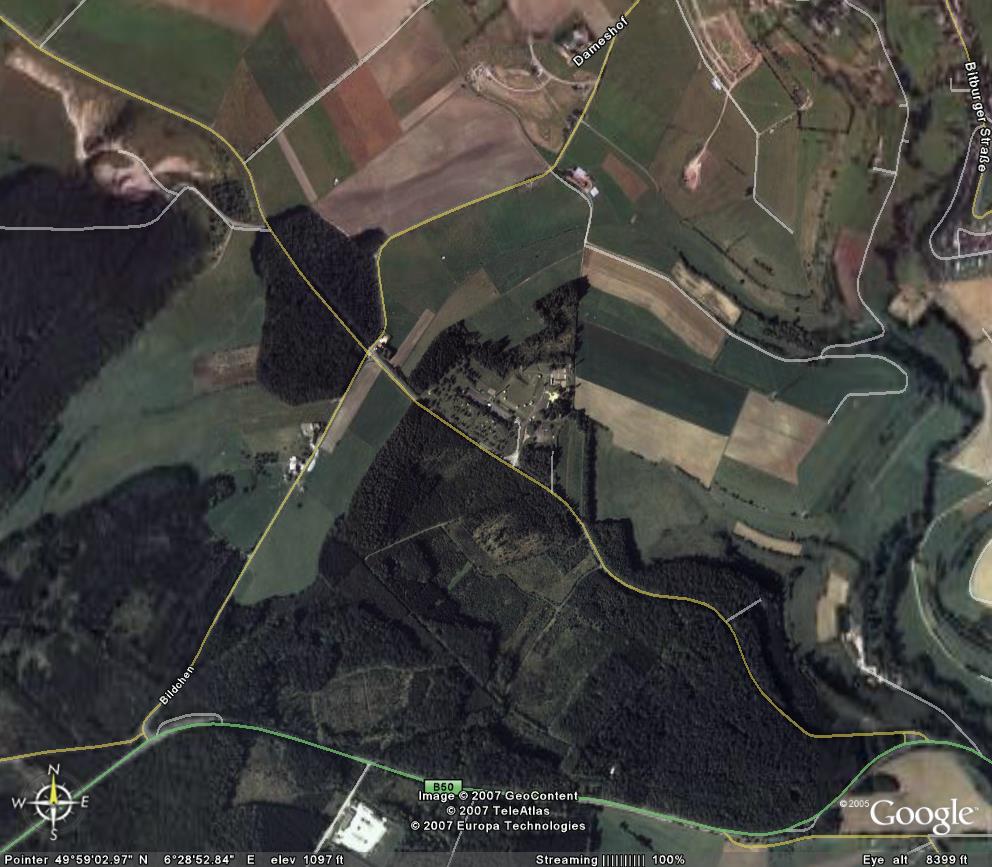 |
|
Photo courtesy of Google Earth |

Home Page |
[ Sembach Air Base | Hahn Air Base | Bitburg Air Base |
498th TMG
| 4504th MTW ]
[ Guidance & Flight Controls | Spotter's Guide | Missile History ]
[ MM-1 Teracruzer | Mace Models & Patches | Contact Us ]
This page is in no way sponsored or endorsed by the United States Air Force.
|
All Contributions remain the property of the original owners
All Contributions used with Permission
Web Page Design and Development by
George Mindling - Port Charlotte, Florida

